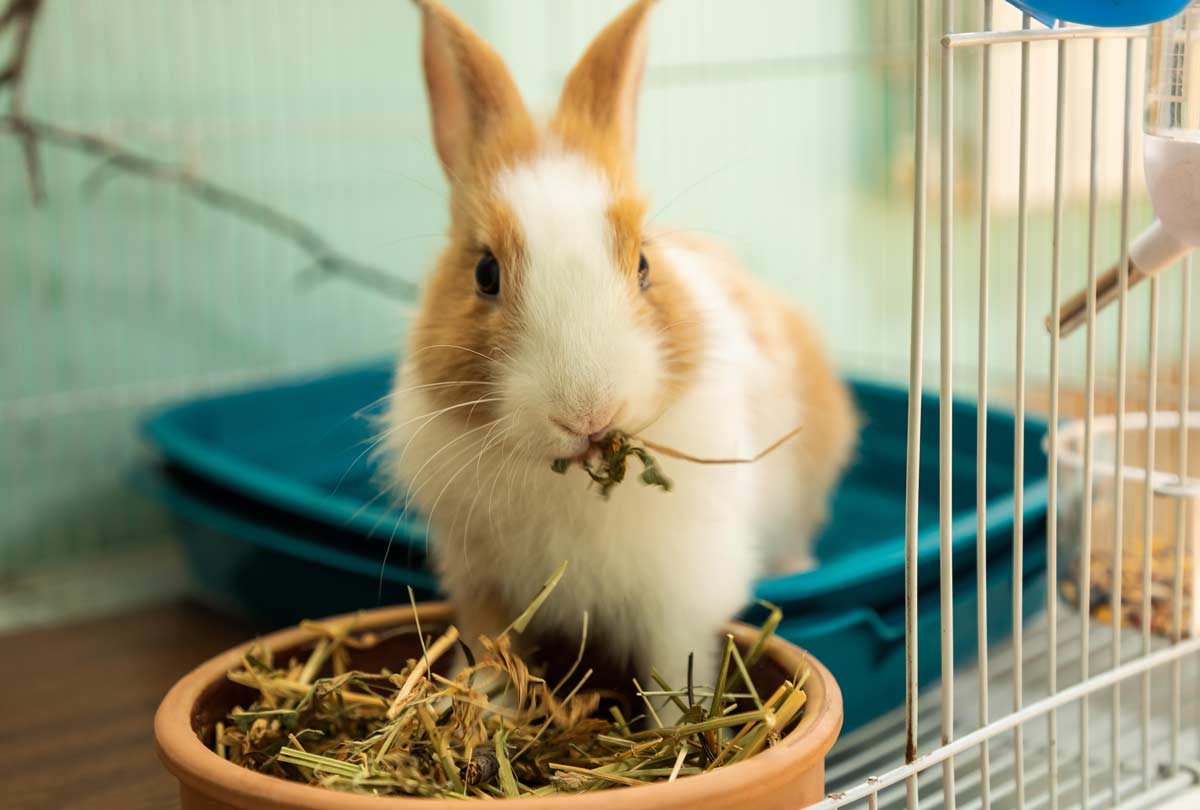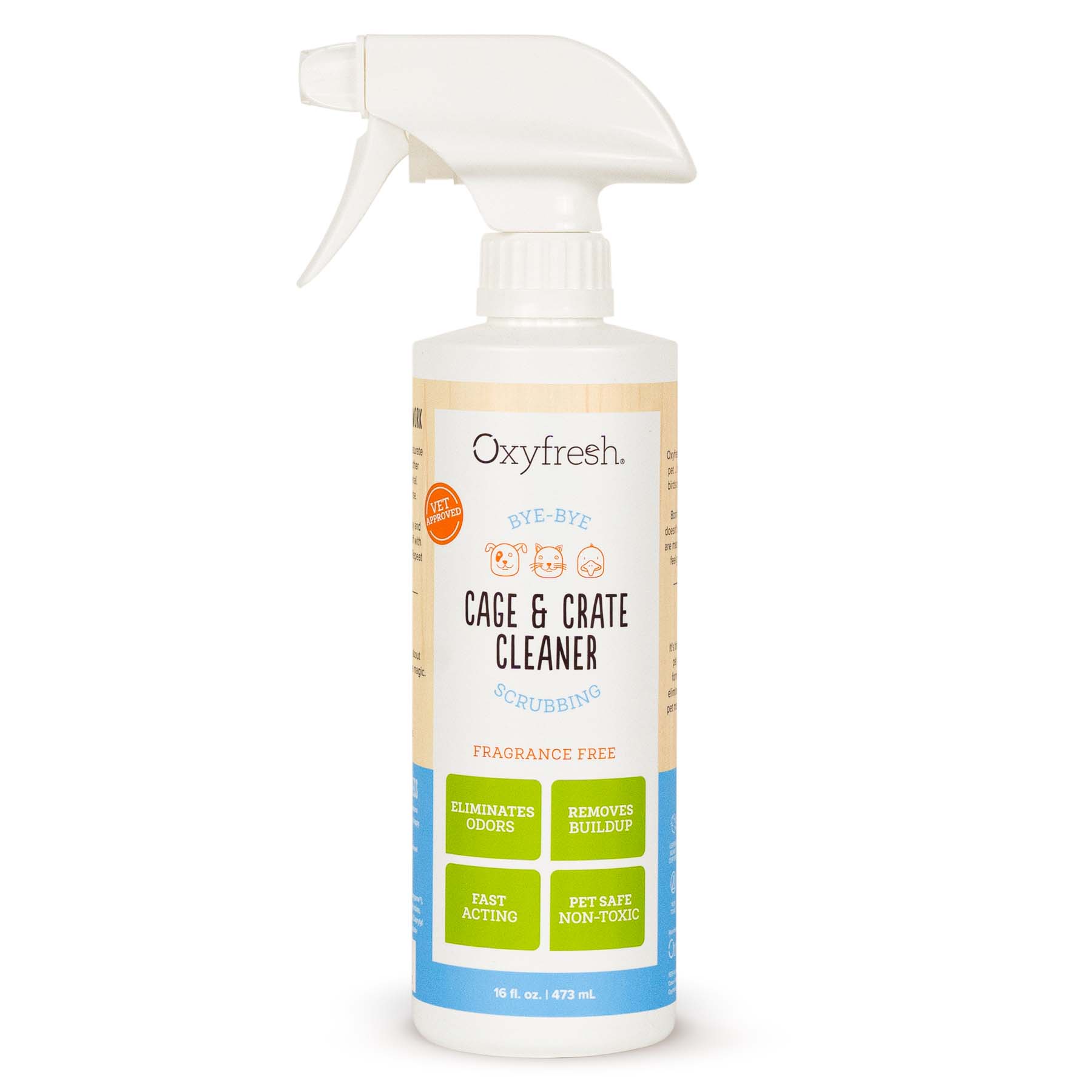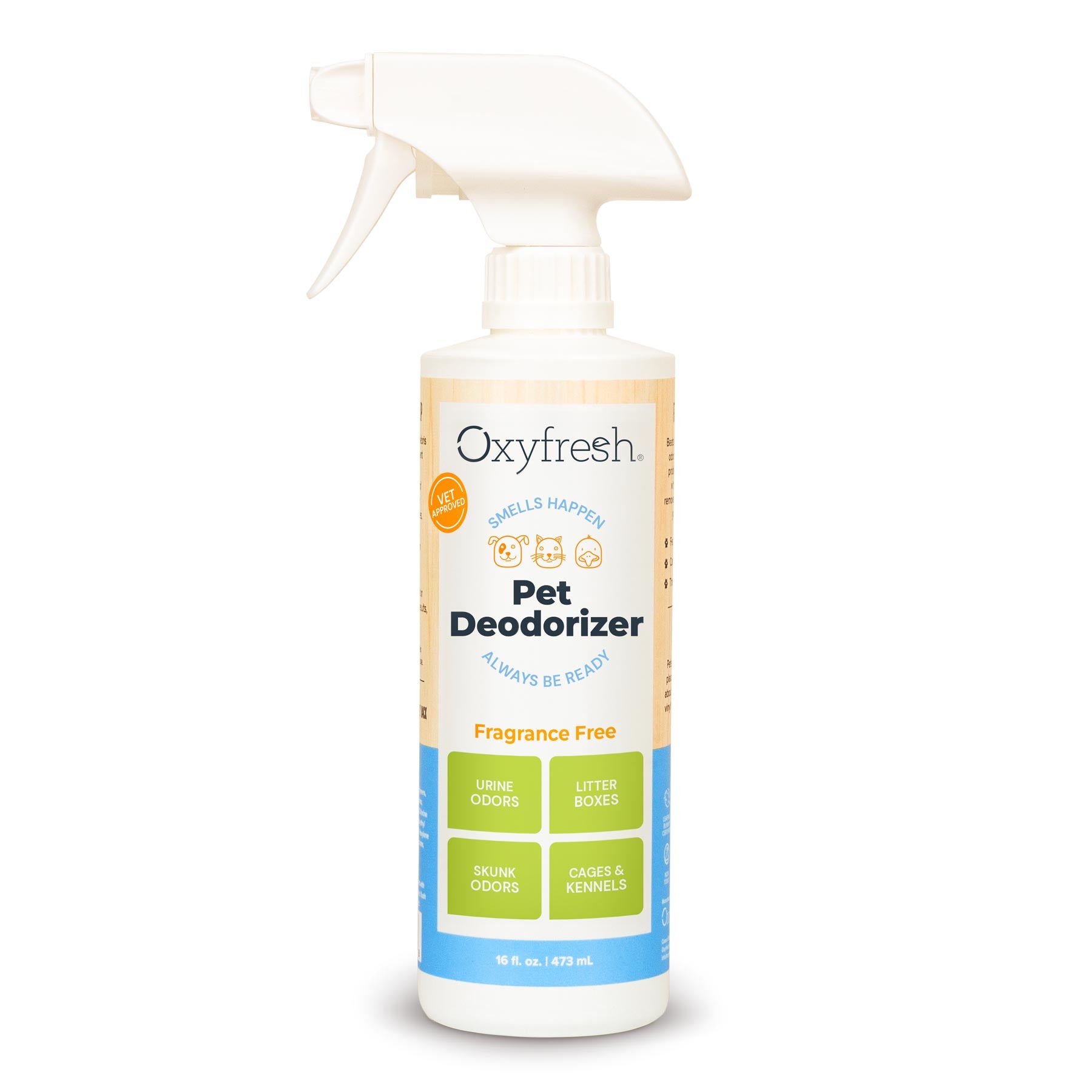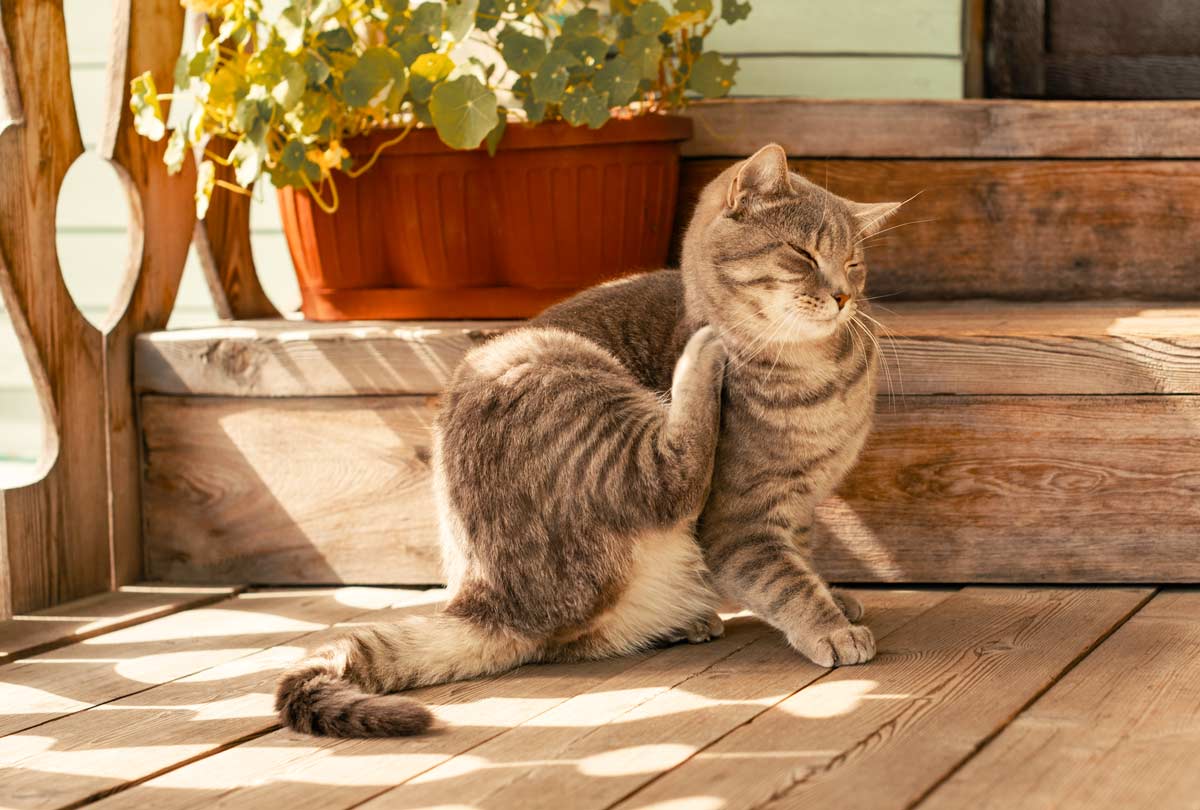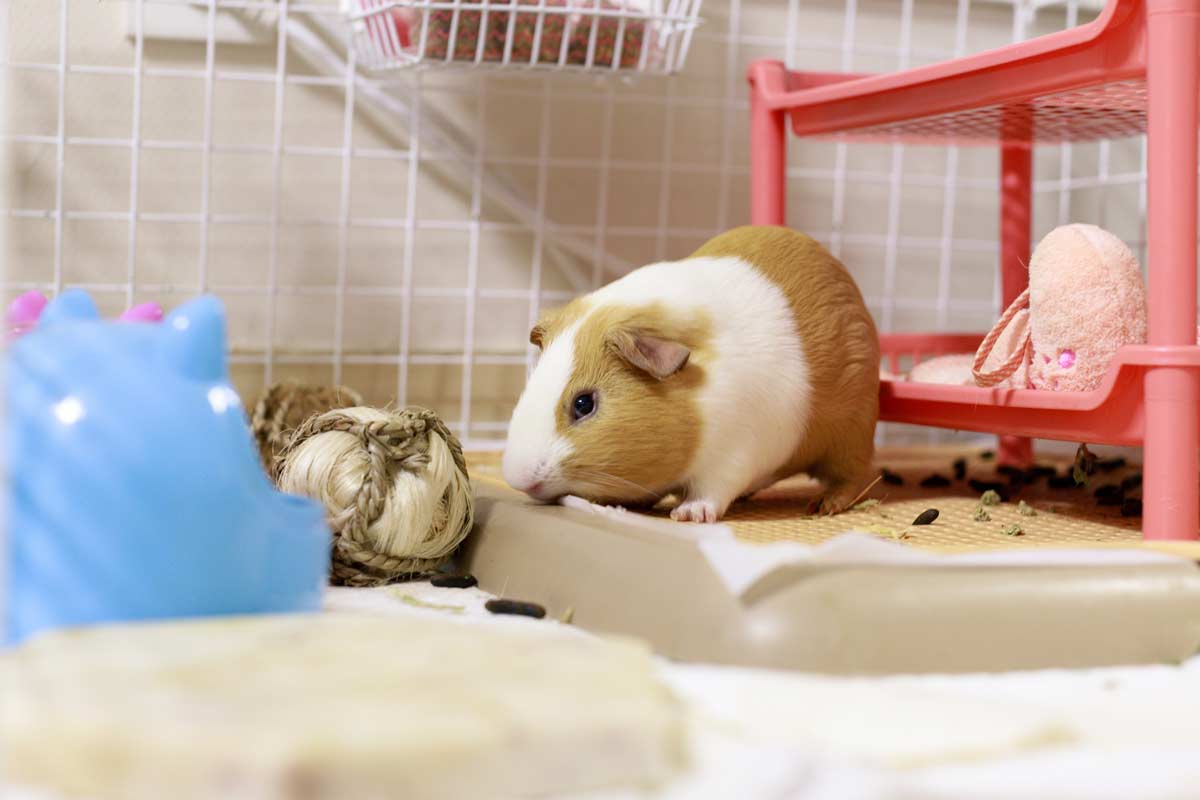We’re guessing that cleaning your rabbit’s cage isn’t high on your list of "How I like to spend my free time." And while many rabbits can be taught tricks, from using a litter box to giving kisses, even the smartest bunny won’t be able to figure out how to clean a rabbit cage. That leaves, ahem, YOU.
But here’s the good news. Once you have a routine down pat, cleaning the rabbit cage will no longer feel like a chore.
How Often to Clean a Rabbit Cage
As a rule, a deep clean of your rabbit’s cage should be done once every two weeks. If your bunny is a total slob, isn’t potty-trained, or you have multiple rabbits, you’ll need to clean the cage more often.
Notice we said deep clean. That doesn’t mean you’re off the hook for two weeks (sorry). The rabbit cage will still need to be spot cleaned daily to keep your bunny happy and healthy.
Choose a set time of day to do this, because like our bunnies, we’re all creatures of habit. Getting into a routine is the #1 tip for how to clean a rabbit cage.
Daily Must-dos for a Clean Rabbit Cage
Remove leftovers. Any uneaten fresh fruit and veggies or soiled dried food (e.g. wet pellets) should be removed from the rabbit’s cage.
Refresh their water. Pour out the old water from their water bottle or bowl, rinse out, and refresh with new water. At least once a week, wash the bowl or bottle with hot, soapy water, preferably with unscented dish soap. Pro tip: a water bowl is much easier to clean than a water bottle. A wide bowl made of ceramic or stainless steel is best.
Rinse the food bowl. Rinse out the food bowl daily, and then once a week, wash it with hot, soapy water, just like you do with the water bowl. Make sure the bowl is completely dry before putting it back in their cage to prevent bacteria growth.
Scoop, there it is! Scoop the litter box and soiled areas of the cage and replace with fresh stuff as needed.
Make a clean sweep. If your rabbit likes to kick food, bedding or litter outside their cage, you’ll want to sweep or vacuum this up to prevent odors. If there are areas on the flooring or walls where your rabbit sprayed, use a non-toxic rabbit cage cleaner to spray the area and then simply wipe it away.
Litter-Trained Rabbits = Less Mess
Rabbits are clean creatures and prefer to go poop in the same place, usually in the corners of the cage, which makes it easier to clean the rabbit cage. You can make the job even easier by placing a litter box in the spot where they prefer to potty.
That means that, much like a cat, even if they’re out roaming around the house, they’ll return to the litter box whenever they need to go. Keep in mind, though, rabbits that aren’t spayed or neutered most likely will turn their noses up at potty training, as they spray urine and scatter poop to claim their territory. Read more about how to litter train your rabbit.
How to Deep Clean a Rabit Cage
Remove your rabbit. Find a safe spot, such as a gated playpen, for your bunny to play or have a snack while you clean the cage. Or if your bunny is free-roam, make sure everything is bunny-proofed, as they love to chew on cords.
Empty out the cage. Have a trash bag ready for soiled litter, food, bedding, etc. Be sure to check for toys with defects and any moist paper. You don’t want mildew growth in the cage. Dishes and toys will go into the sink to be washed with hot soap and water. Any fabric bedding will go into the washing machine on a hot setting with unscented detergent. Dry on a high temperature, avoiding fabric softeners, as rabbits have very sensitive respiratory systems. (Have a spare pair of whatever you’re washing so you’re never left waiting around.)
Clean the cage. Spray all surfaces of the cage with a rabbit cage cleaner and let it sit for a few minutes, paying close attention to corners and crannies where waste likes to hide. Or, if using mild soap and water, use a scrub brush or sponge to clean the cage. Also spray the litter tray and let it soak. Depending on what type of rabbit cage cleaner you use, you may need to rinse the cage off, which is what makes cage cleaning so cumbersome. (Spoiler alert: keep reading to learn about a no-rinse cage cleaner to save you a ton of time.)
Dry the cage. Wipe down the cage with a clean towel or let it air dry. Once the cage is dry, you can add in fresh litter and bedding, being mindful to add enough to cover the bottom of the cage.
Choosing a Rabbit Cage Cleaner
Because rabbits tend to lick everything in sight, it’s vital to use a non-toxic rabbit cage cleaner. (Put down the bleach and slowly back away.) Also, do not cut corners with disinfectant wipes. They have chemicals that are harmful for rabbits to ingest and breathe.
If you love a good DIY hack from the pantry, mix 1-1 parts white vinegar and water in a spray bottle as an affordable and effective rabbit cage cleaner. Spray the cage surface, let the vinegar solution sit for 10 minutes, then rinse it away thoroughly before drying.
You can also use a mild, scent-free dish soap mixed with warm water to clean the rabbit cage. Again, you’ll want to rinse it thoroughly so there’s no soap residue left behind to irritate your bunny.
Easiest. Rabbit Cage Cleaner. Ever.
Do you hate the smell of vinegar ... and worse, lugging the cage around to rinse it off? (Ain’t nobunny got time for that.)
Then discover the easiest rabbit cage cleaner ever: Oxyfresh Cage & Crate Cleaner. It makes bunny cage cleaning a breeze! Simply spray the surfaces of the cage, let it sit for two minutes, then wipe it away with a clean cloth. That’s it. There’s no need to rinse!
Safe, non-toxic and USA-made with no bleach, harsh chemicals, or fragrances, Oxyfresh Cage & Crate Cleaner works like magic on stuck-on urine deposits, making even the messiest bunny cages easy to clean.
And with proprietary Oxygene®, a non-toxic oxidizer that eliminates odorous bacteria at the source, you can be confident in giving your bunny the freshest cage on the block.
Try it and see how easy cleaning your rabbit’s cage can be. And, hey, if you don’t love it, you can have your smelly bottle of vinegar back!

